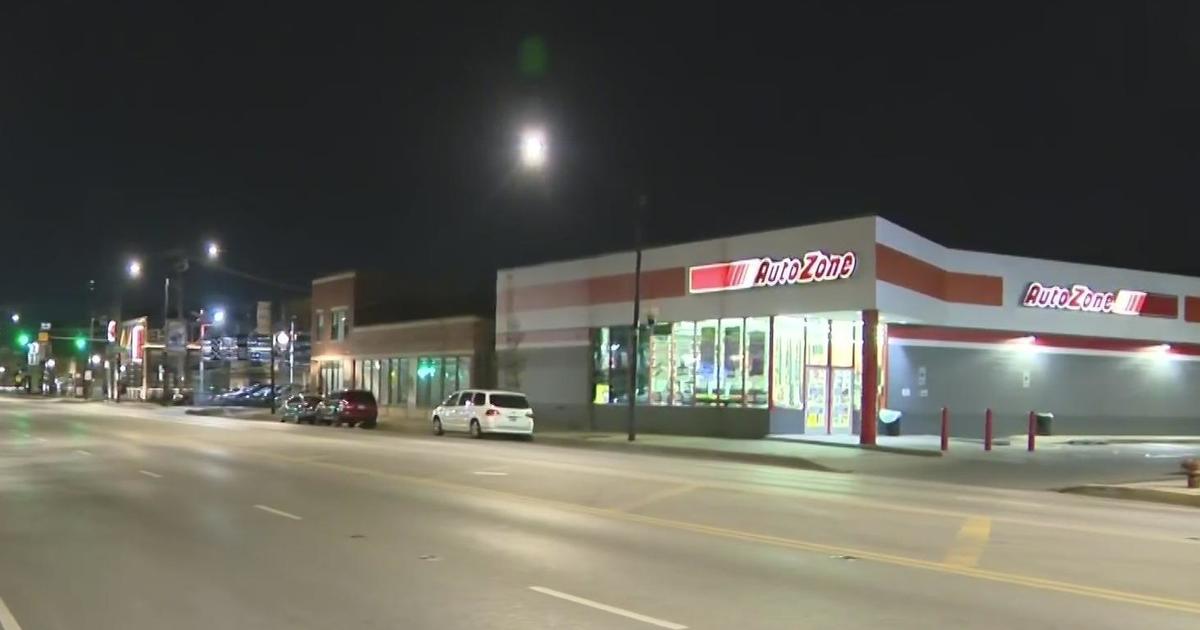Study: South, Southwest Sides Are The Unhealthiest
CHICAGO (CBS) -- A citywide study by Northwestern University has determined that the South and Southwest sides are the unhealthiest.
The study was conducted by the Feinberg School of Medicine at Northwestern, in conjunction with the Chicago Department of Public Health and Chicago State University. It analyzed data from the city's 77 official community areas about the health status of residents and the availability of health care resources.
The study tracked five specific key issues -- childhood obesity, breast cancer, HIV/AIDS, teen pregnancy, and motor vehicle injury and death, a news release said. The issues will serve as the cornerstone of the Chicago public health agenda being released Tuesday.
The study also tracked health resources and assets, such as parks, easy access to high-quality medical care, safe places to exercise and stores that sell affordable healthy foods.
The analysis focused on four specific community areas – Albany Park on the Northwest Side, Chicago Lawn on the Southwest Side, South Lawndale on the West Side, and Auburn-Gresham on the South Side.
Chicago Lawn fared the worst in the study. The community area had the fewest resources to encourage physical activity and healthy eating, with one grocery store, two supermarkets in the northwest corner, and a farmers market.
The study deemed Chicago Lawn a food desert, and pointed out that residents living south of 63rd Street and east of California Avenue in the neighborhood have no convenient access to fresh produce.
Chicago Lawn only has one major park – Marquette Park – and one fitness center, while the other community areas all have multiple fitness centers.
Childhood obesity is considered the most serious public health crisis in Chicago. Compared to the national average, a higher percentage of Chicago teens don't eat green salad, fruit or vegetables, the study said. Physical activity rates are also lower than average, even though more high school students than the national average attended gym classes in an average week.
The study cited troubling reasons for the obesity rates, particularly in Chicago Lawn. It said there are few grocery stores, and few places for children to exercise safely due to gang violence.
"There may be grocery stores, restaurants, doctors, the clinic, etc. But people are going to be like, 'I'm not going there this week because there was a shootout there two days ago,'" one respondent said in the study.
On HIV/AIDS, the study found that Chicago Lawn has no HIV testing sites, and few are located on the Southwest Side to begin with. HIV test sites are even scarcer on the Northwest Side, and none are found in Albany Park. Auburn-Gresham is also without any test sites.
Community perceptions about HIV and AIDS vary in the community areas studied. In Albany Park, some residents said HIV not common, but others said there was "a lot" and it was "under the radar," while in Chicago Lawn, respondents conceded that they didn't know about the prevalence of HIV because "people don't get tested." Perceptions and knowledge of HIV were mixed in South Lawndale, and in Auburn-Gresham, respondents reported that African-American women were severely affected.
On breast cancer, the study found overall mammography sites fairly well-distributed citywide, with fewer on the Northwest and Southwest sides than elsewhere. Most women over 40 surveyed said they had received mammograms in the past two years, but the study said that women often overestimate how often they undergo the test and it is likely that there is still a disparity between black and white women.
The most recent Chicago data available found the cancer mortality rate for black women is 1.62 times higher than for white women.
For teen pregnancies, the study found that 60.7 out of every 1,000 girls ages 15 to 19 gave birth in 2008. In 2000, the rate was 80.5 per 1,000. Based on data collected in 2007, the rates were highest for African-Americans, at 85.7 per 1,000, followed by Latinos at 75.3, whites at 12.3 and Asians at 7.6.
Interviewees said teen pregnancy was very common in Albany Park, Chicago Lawn and South Lawndale, while perceptions were mixed in Auburn-Gresham.
Among motor vehicle crashes, the study found the fatality rate was down 12 percent from 2008 to 2009, but the injury rate remained flat. The intersection of Stony Island and South Chicago avenues had the greatest number of crashes, at 297.
In 2007, the death rate from car accidents was highest among blacks, about twice that of whites, the study said.
"Residents' health suffers and health care costs rise when people live in unhealthy neighborhoods," Romana Hasnain-Wynia, study coauthor and director of Northwestern's Center for Healthcare Equity, said in the release. "Everyone in the city is affected when people can't easily find a doctor, go for a walk or buy a piece of fruit."
The Sun-Times Media Wire contributed to this report.



